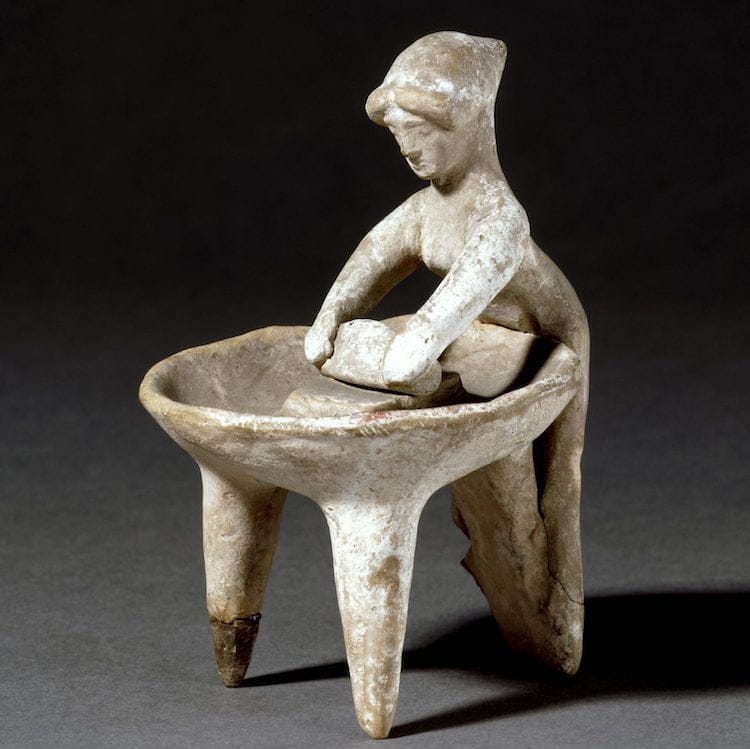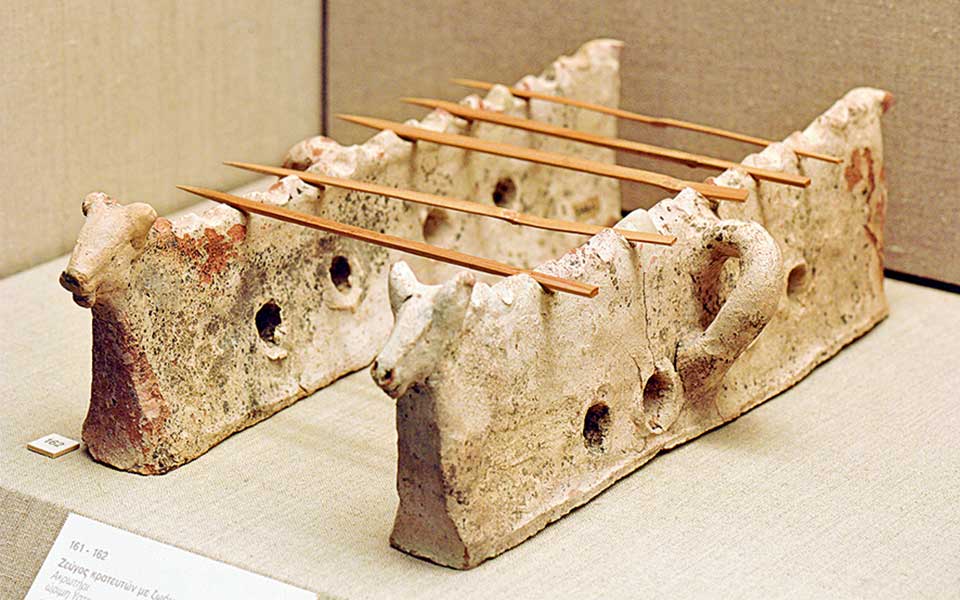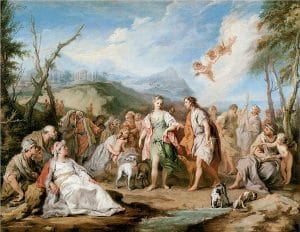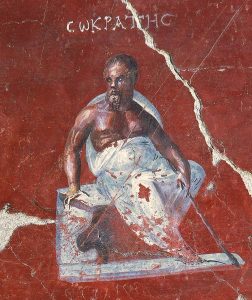Blog Titles
ToggleEphesus food, beverage, cuisine, and meal
Ephesus food
The magnificent ancient city of Ephesus and the Ephesians living in this beautiful city and the people living in the present time, except time, space, and technology, show great similarity in terms of humanity. This time our topic is about eating, drinking, and the preferences of the people living in Ancient Ephesus. In Ancient Ephesus, we can see the most preferred dishes, drinks, and ways of eating that we do not know in both the Hellenic and Roman periods.
Food and drinks in Ephesus
Food and drinks in Ephesus Hellenistic period
We learn the first information about eating and drinking in Ephesus from the epics of Homer and the famous writers of the time. In these epics, it is mentioned that fatty pork, goat, sheep, and veal meats are fried on skewers, as well as eating bread, and drinking diluted wine and milk in the feasts given in the name of the heroes. In the same works, vegetables and fruits in the garden of Alkinos are mentioned.
This gives us information about the types of vegetables and fruits consumed in the Hellenic and Roman periods of Ephesus and for what purpose. The main menu that Ephesians ate throughout ancient times is Maza. Maza is a dough made by mixing water, milk, and Barley flour. This dough was first prepared, dried, and softened by soaking when eaten. Aristophanes said of Maza as the food of the poor.
Hipponax also said that barley bread (maza) and figs were the food of the poor. Wheat bread Artos was eaten only on holidays and feast days. The additives that the poor people ate besides Maza usually consisted of onions, garlic, cheese, and sometimes olives. Except for pork, other animal meats were expensive.

While poor people had the chance to eat a piece of meat only during the holidays, the rich tables had veal, various game types of meat, and seafood. Fish was a popular food, salted and fresh. Since the classical age, meat has ceased to be a luxury in Ephesus and Anatolia and has become a dish that poor people can eat.
The poor people living in Ephesus ate 2 meals a day, morning and evening. Food was usually eaten by hand. Eating with a fork, knife, and spoon in today’s sense was unknown. The knife was sometimes used to shred meat, other dishes were eaten by hand or with a spoon.
The most preferred soup made in ancient Ephesus during the Hellenic era was eaten by adding olive oil, vinegar, and Garon (a type of fish) to these soups, called broad bean soup (étnos). Afterward, it started to include all vegetables used in soups such as cabbage, broad beans, onions, and lentils in the Classical period.
In the Hellenic period in Ephesus, fresh fruits were very expensive and rarely consumed. Poor city dwellers had to make do with dried fruit. Onions, on the other hand, had a symbolic significance from a military point of view. Both dried and fresh fruits and nuts were eaten at the end of the meal instead of dessert. The most important fruits were figs, pomegranates, and raisins. Dried figs were also eaten as an aperitif or added to the wine. In later times, figs began to be consumed with fried chestnuts, chickpeas, and beech fruit.
Fish and meat consumption in Ephesus varied depending on how wealthy the family living in Ephesus was. Hunting (usually traps set by young males) allowed large consumption of birds and hares. Villagers also raised enough geese and chickens to make a living on their farms.
More affluent people could be seen raising sheep, goats, and pigs alongside them.

In the city center of Ephesus, the prices of meat types other than pork were quite high. In Aristophanes’ work Irene, it is stated that a piglet held 3 drachmas with the money of that period. This was equal to the amount of money a normal worker could earn after three days of work.
Meals in Ephesus during the Hellenistic period were 3 meals a day.
Akratismos (Breakfast); Barley bread dipped in wine, (ákratos), sometimes complemented with figs or olives;
Ariston midday or a little later lunch;
Dinner consisted of two parts. Deipnon (main dinner) and Symposion (drinking together)
By the time the shadows reached 10-12 feet tall, it would be dinner time. If the dinner was not among the family, women were not usually at the table. Even though they were at the table, they ate sitting down like children, not like men.
Visitors going to Ephesus would take off their sandals and shoes when they came home, their feet were washed by a slave, and then they would go to the room where they would eat. At banquets, wreaths made of flowers and leaves were hung around the necks of the guests. Before starting the meal, hands were washed with the water brought by the slaves. The meal would start with appetizers, followed by the main course. Men would take place at the dinner by lying on their left elbows.

After the meal, the guests would wash their hands again and perfume was applied to their hands by a slave. Then, for the sympasion, it was passed to the hospitality room called “Andron”, where the sympasion would begin. In the Symposion, not only alcohol is allowed. Conversation, poetry reading competitions were held, short songs called skalia were sung, watching dances and getting drunk were all in the sympasion.
Apart from these meals, there was a special dinner meeting called Eranos, where only men attended this meal and each participant brought food from their own home. It is the exact equivalent of the German method, which is the form of joint payment we make after a meal in our present time.
When the men went to a place where they had a meal together, they shared and paid the bill that came to the fore.
In Ephesus, the wine consumed during the meal was mixed with water and drunk.
The preparation of wine in Ephesus was different from today. The wine was mostly prepared with resin and various spices were mixed into it. Wines to be drunk immediately are preserved in overalls made of goat and pig skins. Wines to be exported were kept in ceramic containers called pitos and were transferred to amphorae when they were to be shipped. Before drinking, wine was mixed in vases called Crater, served to the table with a vessel called Oinochoe, and drunk in glasses called Kyliks, Kantharos, or Skyphos.
Before drinking wine in Ephesus, the gods, especially Dionysus, the god of wine, prayed, then a few drops of wine were poured on the ground and the name of the god to be honored was mentioned, and finally, wine was drunk. For this, the goblet filled with wine was passed from left to right and raised to the honor of those present. The number of glasses to be drunk was either determined from the beginning or left unlimited.
Eubolos has detailed the consequences of avoiding excessive drinking of wine. According to Eubolos;
For 1 glass of health
For 2 glasses of love
For 3 glasses of sleep
For 4 glasses of violence
5 shots to start a fight
To make 6 glasses of banter
7 glasses for black eyes
8 glasses of people to get in trouble with the law
9 glasses for an upset stomach
It was enough to make 10 gobs of madness, tossing things around.
We also know that the beverage called Kikeon (from the word “to mix”) was consumed frequently in Ephesus. However, this was not exactly a drink, but a food between food and drink. It was obtained by adding water and various herbs to a porridge made from barley. According to the legend of the Iliad, sometimes grated goat cheese was also put in it. According to Odyssey, the sorceress Kirki the Nemph would also add honey and magical elixir to the Kikeon.
Demeter, described as the goddess of fertility in Greek mythology, rejected red wine but accepted Kikeon made with water, flour, and watermelon. Although it was sometimes consumed in religious ceremonies, it was also quite common in daily life in the countryside.

In Theophrastus’s Persons, he also wrote down a rude person who came to the assembly by drinking too much Kikeon and disturbed everyone with his smelly breath.
Beer was known, but it was not a widely consumed drink in Ephesus. Aristotle spoke of this drink as “if you drink too much wine you will fall on your back, if you drink too much beer you will fall on your face”.
Food and drinks in Ephesus Roman period
We learn the first information about eating and drinking in the ancient city of Ephesus during the Roman period from ancient writers. Cato’s De Agri Cultura and Varro’s De Re Rustica, Plinius’ Naturalis Historia tell us about the diet of the Ephesians in the Roman period.
However, the work that gives us the best information on this subject is written by A.D. It started with Apicius in the 1st century, but A.D. It is a book called De Re Coquineria, which was completed in the 4th century.
During the Roman period, the main meal of the Ephesians was Puls. Puls differed from Maza in that it was made from wheat flour instead of barley flour. Romans used to eat onions, garlic, and cheese as additives with Puls. During the Roman imperial period, meat and fish ceased to be a luxury in Ephesus and began to be consumed by poor people.
Animal meats eaten in the ancient city of Ephesus during the Roman period are as follows: Pig, sheep, goat, cow, goose, duck, peacock, freckled chicken, pigeon, and wild boar. Garum, a sauce made from salted fish, is used in almost every dish.

In Roman times, they ate two meals a day, some three meals a day, and some four meals a day in Ephesus. Three hours after sunrise, the meal in the form of breakfast was called the Iantaculum. At this meal, bread dipped in wine, olives, dates, and salt was eaten.
If a person from Ephesus eats two meals a day; The first meal he ate 4-5 hours after sunrise was called Prandium. This meal is served as both breakfast and lunch. At this meal, bread dipped in wine, honey, cold and hot meals, salad, and sometimes fruit was eaten.
If a person from Ephesus ate three meals a day, they called Cena the second meal he ate 8 -9 hours after sunrise. This meal was considered the main meal of the day. All kinds of hot and cold meals were eaten at this meal. The last meal of those who ate three meals a day was called Vesperna. And this meal was the food eaten at the Iantaculum.
In Ephesus, the poor people usually ate two meals, while the soldiers ate only one meal. This meal, which the soldiers ate as one meal, was called Prandium.
The dining room was called the Triclinium. In the Roman period, while the rich family of Ephesus, the master, his wife, and children ate at the table, the slaves ate in the areas reserved for them or on the ground. While the poor people and slaves of Ephesus ate their meals with their hands, just like in the Hellenic period, the rich people ate their meals with a tablespoon of Trulia, a large spoon of Liqulae, and a small spoon of Cochlelia.
The tradition of eating with a fork, spoon, and knife was first introduced in France by M.S. It started in 1379, in Italy in the 15th century, and in England in the 17th century.
The salt shaker was very important among the tableware in Ephesus during the Roman period. Even the poorest families made sure that their salt shakers were made of silver.
In the rich houses of Ephesus during the Roman period, the dining table was U-shaped and large enough for nine people to sit on. Three people were seated on each side of the table. The host and his wife were in the Imus section, respected guests were in the Medius section, and other guests were in the Summus section.
The dining table was made of solid wood and it was very fashionable in the rich houses of Ephesus to cover the table with a cover called Mantele. After sitting at the table, the guests would wash their hands with the water brought by the slaves and dry them on the tablecloth.
The rich table of the Ephesians consisted of three parts. Entree, main course, and dessert.
A sherbet, a mixture of wine and honey, was drunk at the entrance (Promulsis). It was believed that this opened the appetite and facilitated digestion.

In the entree, there are also eggs, seasoned vegetables prepared with hot sauces, salad (Lactuca), cabbage (Brassica), beetroot (Rapa), sorrel (Amper), olives (Oliva), leek (Parrum), meatball soup with egg (Boleti), truffles (Tubera) and sometimes snails (Cochlea), oysters (Crudo), salted fish (Salsementa).
Meat and fish were usually eaten for the main course after the entree. After the main meal, the meal was interrupted for a while. It had a religious meaning and significance.
Most of the dishes were made with olive oil. Although it is known, butter, which was never used in food, was only used in medicine. Honey, salt, and pepper were the main additions to the meals. Apart from these, fennel oil (Anethum), Anise (Anesum), cumin (Cuminum), mint (Menta), parsley (Petraselinum), cinnamon (Cinnomonum) were used.
Pork is the most popular meat and it is known that 50 kinds of dishes are made from it.
It was believed that sherbet obtained by boiling honey, oil, and cumin was good for cough. The last part of the meal was called Secundea Mensa, in which sweets and fruits called Bellaria were eaten.
At dinner, the women would sit next to their men. If an invitation was in question, women had the same right to speak as men about the people to be invited.
For the dinner, usually, the participants dressed especially. This clothing was not fancy and extravagant, but simple and comfortable clothing called “Synthesis”. He was sitting barefoot at the table. It was okay to burp at dinner.

As a drink at dinner, wine was drunk by mixing 1/3 with water.
The elders preferred to mix wine with hot water. Although it was fashionable to drink wine without adding water in the time of Emperor Nero (Nero), this way of drinking did not last long.
Drinking wine was also continued after the meal. The name of the person for whom the wine was drunk was mentioned and a wish was made for his health.
During the drink, the flute and the kithara were played, and chatted. The conversation was an appetizer of drink.
Sometimes a text from the philosophers was read after the meal in the rich Ephesus’ houses, and sometimes the belly dancers were played. (Especially Syrian belly dancers were preferred)
Among the different types of wine, the most loved and sought after was the grape called “Passum“. Wine mixed with honey was called “Mulsum”. It is also known that wine is made from fruits such as apples, pomegranates, pears, and raspberry.
The wines obtained after the vintage were put in containers called “Dolia” and then transferred to amphorae. The mouths of the amphorae were covered with plaster or pitch to prevent them from getting air, and they were closed in cellars for maturation.
Ancient cities that gained fame with their wines in Anatolia in ancient times; Ephesus, Pergamon, Miletos, Aphrodisias, Magnesia, Halicarnassos, Smyrna, Knidos, Lampsacus, Kyzikos, Apameia, Oinoanda, and Telmessos.
Usually, red wine was drunk. Sometimes white wine could be produced from red wine. For this, three egg whites had to be added to a bottle of red wine, mixed for a long time, and left for a day.
In time, this mighty city may have left its place for another lifestyle. But rest assured, the people of Ephesus living in Ancient Ephesus and the people living in the town of Selcuk in our time continue to protect the lives, sensitivities, and cultural heritage of the Ephesians from the past. Therefore, how would you like to come to the ancient city of Ephesus, located within the borders of Izmir in Turkey, and share an ancient environment with the original Ephesians living in Selcuk today?





